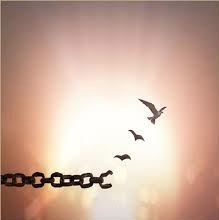IN the World, not OF It

The last chapter of Light on Life begins as a reminder that this “goal” of Samadhi is a worthy one. It might take effort to continue on the path of spiritual freedom and complete Self knowledge, but the process connects us to the true essence of life, which is more real than all the external expressions it holds.
BKS Iyengar lists in this last chapter what he refers to in other writings as the “five vitamins” necessary in the daily life of a yogi: courage, vitality, right and useful memory, awareness through living in the present moment, and total absorption in any activity. These help to keep us on task and alert to our place and actions in the world, and help to support our balance of the “Twin Pillars of Yoga”, Practice and Detachment, which absolutely highlight the paradox of yoga in general – the ability to be fully engaged in life without attaching yourself to all the results.
Which is why I think he then goes on to address the two specific ideas of “Power” and “Time”. As we act within the world we are bound to see results from those actions. As stated in The Yoga Sutras, the practice of yoga leads to incredible knowledge of the world and of ourselves, and without reflection and compassion this knowledge could lead to unchecked power. It is no mystery that within many spiritual traditions (not just yoga), the power held by leaders is commonly abused, the reflection and detachment of those individuals somehow lost along the way. To stay true to the path, we have to have “courage” to face our own truths and weaknesses and “right and useful memory” to check our behavior so as to know our progress along the path is for the better.
The “awareness of present moment” and “total absorption within any action” is what takes us out of the limits and boundaries of time and also is indicative of the idea of “Detachment”. In this chapter he gives the example of Savasana since it is an experience that we all have as students of yoga. To have the full experience of Savasana, we have to let go of what was, what will be, and even let go completely of who we are. This ability to completely surrender and detach ourself from identity that is stuck in the movement of time drops us into the experience of pure “being” in the present.
The next sections of Chapter 7 highlight distinct aims and stages within life. I personally find these interesting as they are something that our Western culture doesn’t specifically acknowledge, tending more toward a “work forever”/”live forever”/”collect all the toys” mentality. He does separate them in Light on Life, but they can also be looked at together as each stage (Ashrama) of life does carry a certain aim (Purusartha). What stage are you in??
- Brahmacaryasrama is our younger years of “studentship”, learning self control, discipline, and respect for elders. Within this stage of life we might come to understand the first aim, our dharma, our duty to ourselves and others.
- Grhasthasrama is the stage of earning a living and sampling all the pleasures of the world. During this time we uphold the aim of artha, self-reliance and independence.
- Vanaprasthasrama is the beginning of letting go of the trappings of working life, the aim of which is to enjoy the pleasure of your bounty without having to be immersed in work completely, kama.
- Sannyasasrama is the final stage of letting go of and detaching from the ties of life, family, and community, understanding and preparing for death. The ability to detach brings that experience of pure freedom, moksa.
And, as we might find ourselves in one stage or another, or working toward one aim or another, all the while we function within our body and the world. As we look to the ending of Light on Life, he gives us the reminder that all of life and all of yoga beings with ethics…both universal and personal…so stay tuned for those.